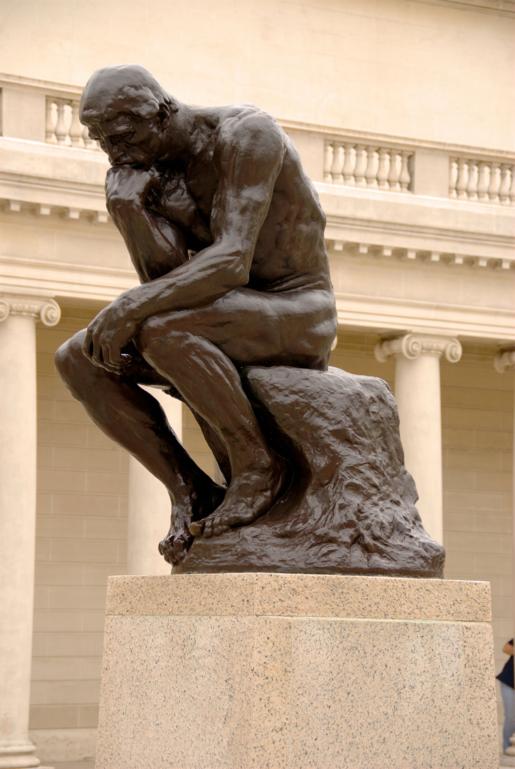Was Rodin’s First Major Sculpture Really Just a Plaster Cast of a Model?
Here is the latest in a series of examinations into urban legends related to the world of sculpture and whether they are true or false.
SCULPTURE URBAN LEGEND: Auguste Rodin made a mold of a person for the basis of his statue, Age of Bronze.
In a lot of ways, the beginning of Auguste Rodin’s career helps prove the old saying, “Any publicity is good publicity.”
The first 30 years of Auguste Rodin’s life likely brought a good deal of development to him as an artist, but it did not do a lot for his bank account. He dealt with poverty for most of these years. 1870 was a turning point, though, for Rodin, as he moved to Brussels with his boss, artist Albert-Ernest Carrier-Belleuse to do some ornamentation work on a palatial Brussels estate.
Although the two parted ways soon after arriving in Brussels, Rodin managed to get work in various other studios, and over time, he began to save up enough money to travel and study the masters of sculpture in Italy, like Donatello and Michelangelo.
In 1877, Rodin finally burst on to the international art scene with his work, Age of Bronze…

However, the stunningly life-like sculpture also brought a great deal of controversy to Rodin, as he was charged with a major no-no by the rest of the art world. It was said that Rodin made a cast of a model and then sculpted around that cast. That was a major artistic taboo.
Was it true?
Nope.
Really, it’s a lot like the way any “out of nowhere” striking artistic accomplishment is treated – people find it hard to believe that this “nobody” could produce such a stunning piece of art. In fact, the work in 1877 was done in plaster because, as I noted before, Rodin did not have a lot of money so he could not afford to cast his work in bronze. So he needed the French Salon to authorize the use of bronze. And they would not authorize it until they could prove that the work was a legitimate piece of art and not just a cast of an actual person.
So for two years, Rodin and his artist acquantinces from Brussels had to prove the work, and eventually, the Salon accepted their arguments (Rodin had photographs and casts that showed his progress of the piece) and in 1880, the piece was cast in bronze and entered into the Salon competition, where it took a third place medal.
However, the controversy over the work was such that people came from all over Europe (and heck, the world, even!) to see this work that such a fuss was made about, and thus, Rodin became an international art celebrity.
He would remain a world-renowned sculptor for the rest of his life.
He is probably best known nowadays for his work, The Thinker…

The legend is…
STATUS: False
Feel free (heck, I implore you!) to write in with your suggestions for future installments! My e-mail address is bcronin@legendsrevealed.com.






He’s pretty good I guess,
but I always found The Prinker to be the superior work.